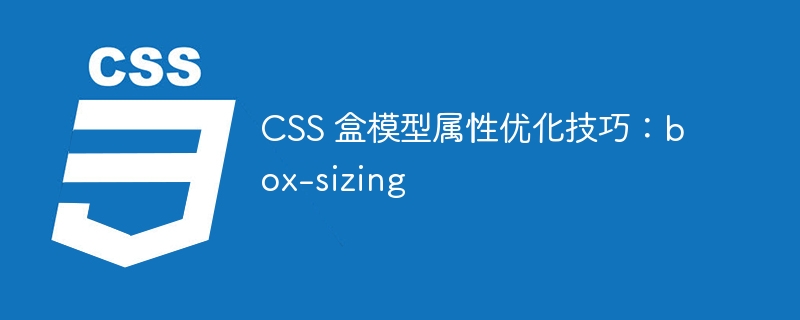

CSS box model attribute optimization skills: box-sizing
With the development of web design, the CSS box model has become an indispensable part of front-end development. Among them, the box-sizing attribute can effectively control the size calculation rules of the box to ensure the accuracy and consistency of the page layout. This article will introduce the use of box-sizing and provide some practical code examples to help readers better understand and apply it.
The box-sizing attribute can change the calculation method of the box model. By setting box-sizing to border-box, the width and height of the element will include content, padding, and border, not just the content part. In this way, when calculating the size of elements, it is no longer necessary to consider the effects of padding and border separately. The size of elements can be controlled more accurately, ensuring that the page layout is more accurate and consistent.
Global settings:
Settings for specific elements or selectors:
.box {
box-sizing: border-box;
}
In the above two methods, setting box-sizing to border-box is the comparison A common approach because it unifies the calculation of all elements and simplifies the development process.
3.1 Multi-column layout with equal width
In multi-column layout, it is usually hoped that each column has the same width while retaining certain padding and border effects. This process can be simplified using box-sizing, as shown below:
HTML code:
CSS code:
.container {
display: flex;
}
.column {
flex: 1;
padding: 10px;
border : 1px solid #000;
}
.column {
box-sizing: border-box;
}
In the above example, each column has The same width, and the space occupied by padding and border is correctly accounted for.
3.2 Responsive Image Layout
When dealing with responsive image layout, it is often necessary to add a certain padding or border style to the image to give it a consistent appearance under different screen sizes. This process can be simplified using box-sizing, as shown below:
HTML code:

CSS code:
.image-wrapper {
width: 100%;
padding: 10px;
border: 1px solid #000;
}
img {
display: block;
max-width: 100%;
}
.image- wrapper {
box-sizing: border-box;
}
In the above example, the image-wrapper element adds padding and border styles, and the size of the img element will automatically adapt to the size of the parent container size, while retaining the space occupied by padding and border.
Summary:
By properly applying the box-sizing attribute, we can more accurately control the size and layout effects of elements. When designing and developing pages, when you need to adjust the size of elements to adapt to different scenarios, it is recommended to use the box-sizing attribute, which can simplify the development process and improve work efficiency. I hope this article can help readers better grasp and apply the box-sizing attribute and achieve better results during the development process.
The above is the detailed content of CSS box model property optimization tips: box-sizing. For more information, please follow other related articles on the PHP Chinese website!




